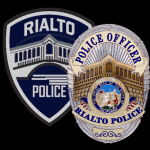Operations Division
DIVISION COMMANDER
CAPTAIN CAMERON NELSON
The Rialto Police Department’s Operations Division is headed by Captain Cameron Nelson.
First-line supervisors, which hold the rank of sergeant, ensure the department’s mission is completed, and each bureau, unit, team, and program are operated in accordance to the division commanders direction.
BUREAUS
Bureaus are sections within a division that have a specific objective.
INVESTIGATIONS BUREAU
The Rialto Police Department Detective Bureau is responsible for handling complex criminal investigations beyond the initial efforts of law enforcement field personnel. Some of the cases handled by detectives include homicides, serious assaults, sex crimes, reports of elder or child abuse, robberies, burglaries, frauds, and other thefts. These investigative efforts include the gathering of information, interviewing involved parties, collecting evidence, recovery of stolen property, arresting offenders, and bringing criminal cases to successful prosecution and conclusion. They are accomplished through the ongoing relationships and collaborative efforts of personnel throughout the law enforcement community, as well as other professionals in both public and private sectors, and private citizens.
PATROL BUREAU
The Patrol Bureau is divided into six patrol teams; with the patrol officers working a combination 3-12 / 4-10 schedule. The Patrol Division is comprised of the officers assigned to uniformed patrol which are the first to respond to calls for assistance in the community. This would include the Traffic Unit, K-9 Teams, and Reserve Officers. The Patrol Division operates 365 days a year, twenty-four hours a day. Response times and calls for service are not only a concern to the department but to the community as well.
The Rialto Police Department understands the importance of response times and will be aggressively re-evaluating staffing, call types, and other factors that affect this. As the City’s population increases, freeways are completed, and residential properties increase in numbers, so does the department’s obligation to provide services. Staff is committed to stay in front of this issue and evaluate both internal and external factors that impact the ability of the department to effectively police its community. To function effectively, the Rialto Police Department recognizes that it must have the trust and confidence of the community. Therefore, the organization’s commitment to the principles of community policing will remain unwavering.
The Rialto Police Department subscribes to the concepts of “evidence-based policing.” “Evidence-based policing” is the use of the best available research on the outcomes of police work to implement guidelines and evaluate agencies, units, and officers. It suggests that just doing research is not enough and that proactive efforts are required to push accumulated research evidence into practice through national and community guidelines. These guidelines can then focus in-house evaluations on what works best across agencies, units, victims, and officers.
TRAFFIC BUREAU
The Rialto Police Department Traffic Unit has two primary responsibilities. The unit investigates traffic collisions and all traffic related crimes, and strives to reduce highway deaths, injuries, and property damage through enforcement.
Officers in this unit use a variety of sophisticated equipment in the investigation of serious accidents. Our officers use land surveying equipment and complex computer mapping systems to generate precise factual diagrams of collision scenes. These diagrams are used to determine vehicle speeds and directions of travel. Complex algebraic, geometric, and trigonometric calculations are performed during the course of the investigations. In order to better understand and investigate collisions, skilled traffic officers are trained and educated in the various fields of science, including kinetics and Newtonian physics.
During 2011 the Rialto Police Department obtained grant funds from the Office of Traffic Safety (OTS) for several programs to include a comprehensive DUI reduction program, DUI checkpoint operations, and seat belt enforcement operations. In addition, the Traffic Unit conducted several presentations (programs) at local schools to include “Safety City” and “Teen Driver Awareness.” Traffic personnel became involved in a countywide DUI program called Avoid the 25, which is comprised of 25 San Bernardino County agencies that collectively work together targeting DUI offenders. This program is also sponsored by The Office of Traffic Safety.
TEAMS AND UNITS
Teams and units are smaller, specialized groups of officers and other personnel who work in a specialized field.
CRIME ANALYSIS UNIT
The Crime Analysis Unit falls under the Operations Division and is primarily responsible for the identification, analysis, and dissemination of crime and offender information to patrol and other divisions of the department to assist in the goals of crime prevention, criminal apprehension, and resource allocation. Incident data is studied to determine “who is doing what to whom” and to assist in the identification of any existing crime pattern(s) or series. This type of information is distributed to all members of the department by means of crime bulletin notifications, crime series forecasts, wanted flyers, and hot sheets. Geographic Information Systems (GIS) is used to display a visual of the incident locations and aids in the identification of hot spots and/or denser crime areas which is oftentimes useful in determining where to focus extra patrol efforts.
CAU also works closely with the Detective Bureau by providing a list of possible suspects that match certain criteria on a case-by-case basis in order to clear cases involving homicide, robbery, burglary, aggravated assault, grand theft, sex crimes, and identity theft. Some of these factors include but are not limited to a suspect’s physical description, vehicles owned/associated with, parole/probation status, prior criminal history as it relates to the investigation, and probable locations for contacting the individual.
The Crime Analysis Unit also conducts intelligence analysis for the gang and narcotics units by focusing on the relationships between subjects and the criminal organizations they affiliate with. The analysis of statistics is also an essential role of this division. The unit provides regular updates to command staff regarding changing trends in violent and property crimes, response times, traffic data, etc. This information is used by staff in consideration of personnel deployment changes as well as special projects/operations when targeting areas of concern.
The Rialto Police Department subscribes to the concepts of “evidence-based policing.” “Evidence-based policing” is the use of the best available research on the outcomes of police work to implement guidelines and evaluate agencies, units, and officers. It suggests that just doing research is not enough and that proactive efforts are required to push accumulated research evidence into practice through national and community guidelines. These guidelines can then focus in-house evaluations on what works best across agencies, units, victims, and officers.
To contact the Crime Analysis Unit with general inquiries or to submit a request for a written statistical report, send an email to crimeanalysis@rialtopd.com. Requests for statistics can also be submitted at our front counter by filling out an Application for Police Public Disclosure~Request for Statistical Information (blue form). For your convenience, this form is available in both English and Spanish. All requests for copies of police reports or calls for service history logs should be directed to our Records Bureau.
K-9 TEAM
The Rialto Police Department K9 Unit is made up of four K9 teams. The K9 units are deployed to conduct area, perimeter, open fields and building searches. The police K9’s allow officers perform their duties in a safe manner, by alerting on the areas where suspects have hidden themselves in order to avoid capture and arrest. K9 teams are also trained to detect drugs and narcotics. The use of the police K9’s save the citizens of Rialto over 1200 manpower hours annually. The Rialto Police K9’s also conduct several demonstrations throughout the year to meet and greet the public. A majority of these requests for K9 demonstrations are from schools and children’s groups.
NARCOTICS TEAM
The Narcotics Team is a specially trained enforcement team responsible for the investigation and reduction of narcotics sales that negatively impact the quality of life in neighborhoods throughout the city of Rialto.
The Rialto Police Department currently has one officer assigned to the DEA Task Force and one officer assigned to the Tri-City Regionalized Narcotics Team (representing Rialto, Fontana and Colton).
Currently, the Street Crime Attack Team (SCAT) handles all ongoing narcotics investigations.
REGIONAL SWAT TEAM
On July 1, 2012 the cities of Rialto, Colton, and Fontana joined forces and created the Inland Valley SWAT Team. A 45-man tactical and negotiating team highly trained in specialized tactics and complex negotiations. This regionalization came about due to a greater need to do more with less and still allowing for specialized police officers to respond to major incidents within the region. It definitely benefits all of the cities involved in that there is a huge cost savings and manpower benefit which is especially important during these tough economic times.
The Inland Valley SWAT Team is comprised of five color coded teams (Red Team, Green Team, Silver Team, Black Team, and Gold Team) that handle different tasks during a call out based on their color code designation. Each tactical unit rotates being on-call every fourth week and must have a minimal response time to a call out thus assuring a prompt response during an emergency. IVS team members train twice a month and respond 24-hours a day to any type of incident that patrol officers are not equipped to handle.
The Inland Valley SWAT Team also has 4 fully trained paramedics and a tactical surgeon that can handle any medical emergency encountered during a tactical situation. Since December 2012, IVS has been called out several times resolving each incident successfully and with no injury to citizens or suspects.
STREET CRIME ATTACK TEAM
The Street Crime Attack Team (SCAT) is a specially trained gang enforcement team. The team is currently comprised of one sergeant, one corporal and four officers; with the primary mission of reducing gang violence and impacting the quality of life in neighborhoods through the persistent application of innovative law enforcement techniques. This concept is based upon ethical practices and effective strategies that endorse the use of extensive prevention, and suppression techniques. SCAT works in conjunction with other law enforcement agencies, San Bernardino County Probation, State Parole, and the District Attorney’s Office in their endeavor to arrest and prosecute violent gang members.
PROGRAMS
Programs address specific problems and community issues and provide a framework for how those topics are handled.
COMMUNITY DISTRICT PROGRAM
The Rialto Police Department has implemented the Community District Program. District Lieutenants act as community liaisons within their area and work with residents, businesses, and community organizations on addressing non-emergency general public safety issues or quality of life neighborhood concerns.
The Community District Program is responsible for those areas which directly influence the quality of life for the residents and businesses in Rialto. In addition to enforcing the laws of our society, the Police Department believes it is equally important to maintain and develop positive relationships with all community members. The Community District Program is one of many innovative examples of the Rialto Police Department’s “Commitment to Community.”
The Rialto Police Department’s Community District Program is working to provide a safe and secure environment for the community. The utilization of proactive community-based policing concepts, problem-solving principles, technology, and effective crime-fighting strategies are just part of the program’s overall plan.
The Rialto Police Department subscribes to the concept of “evidence-based policing.” “Evidence-based policing” uses the best available research on the outcomes of police work to implement guidelines and evaluate agencies, units, and officers. It suggests that just doing research is not enough and that proactive efforts are required to push accumulated research evidence into practice through national and community guidelines. These guidelines can then focus in-house evaluations on what works best across agencies, units, victims, and officers.
Navigate to “Our Leadership” tab to locate your District Lieutenant.







